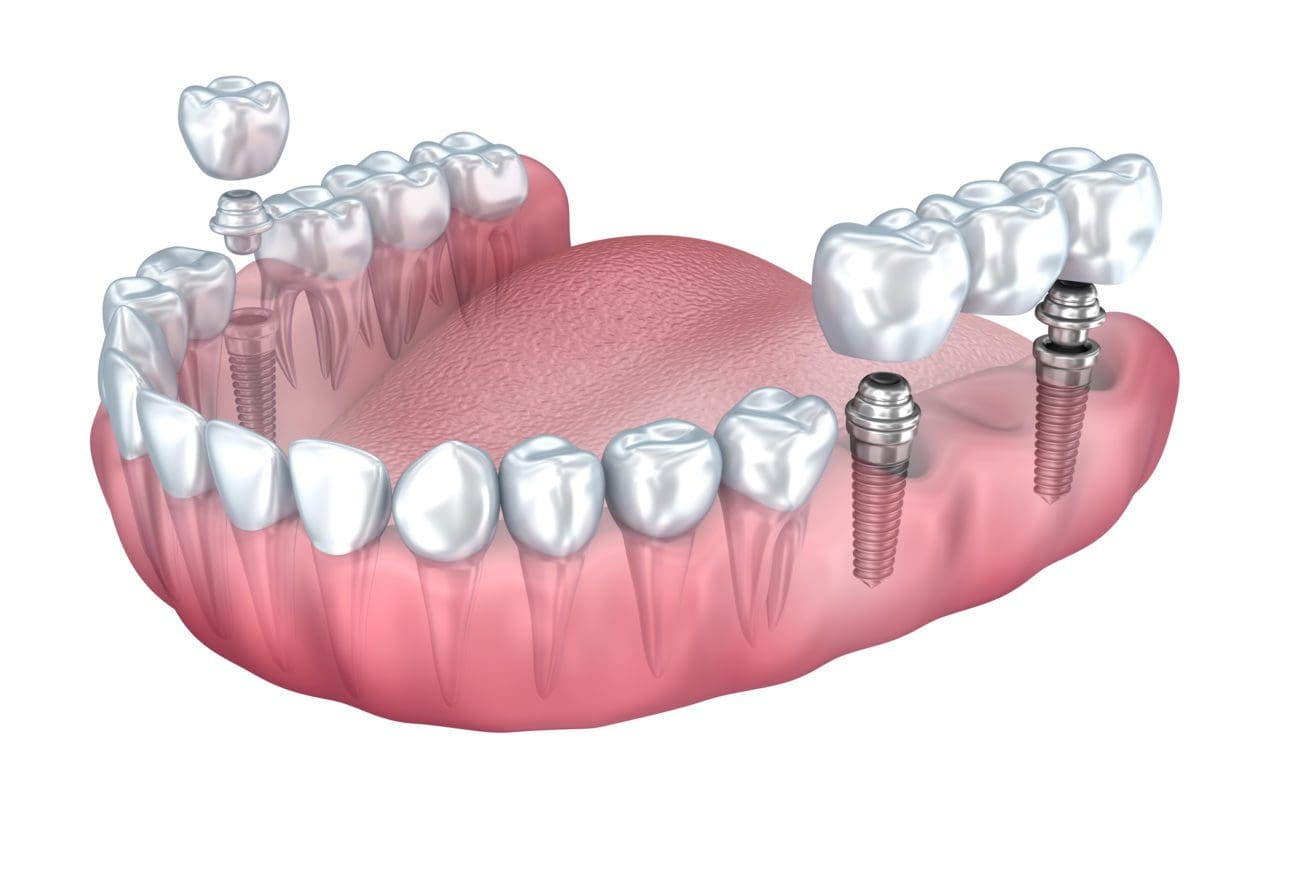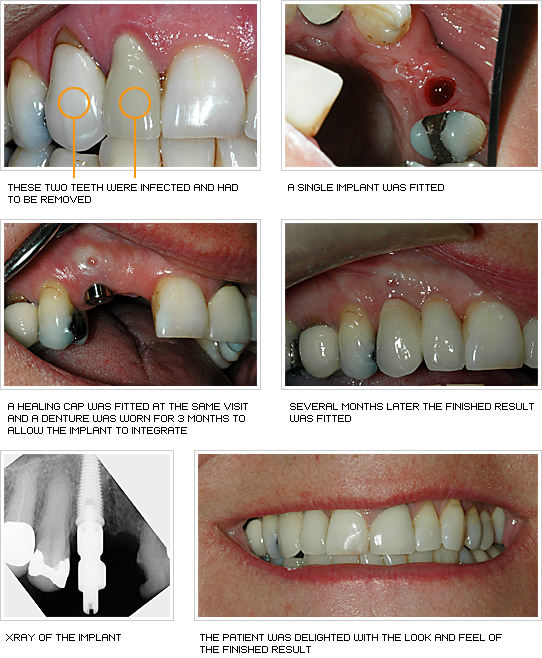The Dental Sense PDFs
The Dental Sense PDFs
Blog Article
The Ultimate Guide To Dental Sense
Table of ContentsDental Sense - An OverviewDental Sense - The FactsFascination About Dental SenseSome Known Factual Statements About Dental Sense
are clinical tools surgically implanted right into the jaw to bring back a person's ability to eat or their look. They supply assistance for synthetic (phony) teeth, such as crowns, bridges, or dentures. When a tooth is lost as a result of injury or illness, an individual can experience complications such as quick bone loss, defective speech, or adjustments to chewing patterns that cause pain.Oral dental implant systems are composed of a dental implant body and dental implant abutment and may also consist of a joint fixation screw. Root canal procedure. The oral implant body is operatively placed in the jawbone in place of the tooth's origin. The dental implant abutment is normally connected to the implant body by the abutment addiction screw and expands through gum tissues right into the mouth to support the affixed artificial teeth
(https://trello.com/w/dentalsense11/members)Framework of The Oral Implant System choosing oral implants, speak to your dental copyright about the possible advantages and risks, and whether you are a prospect for the treatment. Things to think about: Your general health and wellness is a vital variable in determining whether you are a great prospect for dental implants, for how long it will require to heal, and how much time the implant may remain in place.
Cigarette smoking might affect the recovery process and lower the long-lasting success of the dental implant. The recovery procedure for the dental implant body might take several months or longer, throughout which time you typically have a short-term abutment in area of the tooth. the oral implant procedure: Thoroughly follow the oral hygiene instructions offered to you by your dental provider.
Dental Sense Can Be Fun For Anyone
Implant failing can result in the demand for one more medical procedure to take care of or replace the dental implant system. Recovers the capacity to chew Brings back aesthetic appearance Aids keep the jawbone from shrinking because of bone loss Preserves the health of the surrounding bone and gums Assists maintain adjacent (neighboring) teeth stable Improves lifestyle Damages to surrounding all-natural teeth throughout implant positioning Injury to the surrounding tissues during surgery, such as sinus perforation Injury during surgical treatment (as an example, fracture of bordering jawbone) Poor feature, such as really feeling like the teeth do not bite with each other typically A feeling that the tooth is loose or turning in place arising from a joint screw loosening Implant body failing (looseness of the implant body) because of systemic infection, which might be most likely in clients with uncontrolled diabetes as a result of local infection in bone and gums supporting the dental implant body as a result of delayed healing, which may be more probable in individuals who smoke Difficulty cleaning the periodontals around the implant, leading to poor oral hygiene Untreated gum condition Post-surgical numbness as a result of nerve impingement or damages Always inform healthcare providers and imaging specialists that you have dental implants before any type of magnetic vibration imaging (MRI) or x-ray treatments.
FDA is not mindful of any kind of adverse occasions reported for MRI or x-ray treatments with dental implants. Dental implants systems are usually constructed from products that comply with international consensus standards of the International Company for Standardization (ISO) or ASTM International. These requirements have information of what makes a safe product.

An oral implant is a framework that replaces a missing tooth. With screw-like tools, the cosmetic surgeon inserts a dental implant right into the jawbone, and it acts as a support for a man-made tooth, called a crown.
Not known Factual Statements About Dental Sense
Some people are not qualified for dental implant surgery. It is for dental doctors to operate people with: intense illnessuncontrollable metabolic diseasebone or soft tissue disease or infectionIf these problems are settled, an individual can have the surgical treatment. In, oral surgeons refrain from operating individuals with: If people with any of the above undergo dental implant surgical treatment, there is a higher risk of the dental implant falling short.

Dental dental implant surgery is a tailored procedure. It's not the exact same for everyone. The complying with gives a basic review of what you can anticipate your dentist, dental doctor, periodontist or prosthodontist to do: Place the implant operatively. Offer you time to heal. Connect the post and final crown, bridge content or denture.
Next off, your doctor will meticulously put the oral implant into your jaw. Lastly, your cosmetic surgeon will reposition your periodontals and close the cut with stitches. If your dental implant is near the front of your mouth, your dental expert will make a temporary tooth for you to put on up until you heal. In this way, you won't have a void in your smile while you recoup.
The smart Trick of Dental Sense That Nobody is Discussing
Your provider can inform you what to expect in your situation. During the healing phase, your jawbone must fuse to the dental implant. This procedure, called osseointegration, is critical for stability and lasting success. This procedure can take anywhere from three to nine months. In some cases, it might take much longer.
When your dental implant heals, your dentist can attach the abutment (little adapter message) and your final remediation (crown, bridge or denture). This usually takes regarding one hour to finish and might need a 2nd minor surgery. You shouldn't really feel any type of discomfort during your dental implant procedure due to the fact that your service provider will utilize medication to numb your gum tissues.
Report this page